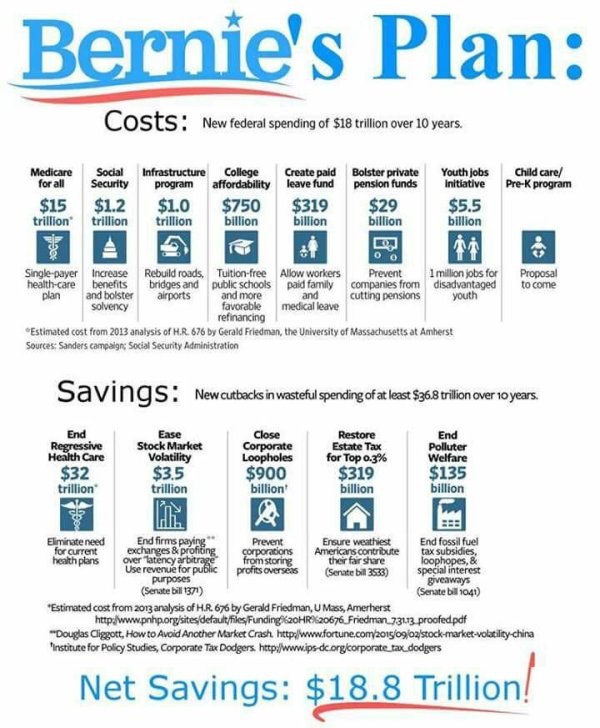RELATED: Gerald Friedman, a respected economist (and Clinton supporter by the way) took a look at Sanders’ proposals, ran the revenue and spending numbers through a standard economic model, and suggested that the very high level of spending would provide a “significant stimulus to an economy that continues to underperform, with national income and employment at levels well below capacity.” This stimulus could lead to several positive economic outcomes, including increasing gross domestic product growth to 5.3 percent a year, cutting unemployment to 3.8 percent and increasing wages by 2.5 percent per year. This, combining with the revenue proposals, would bring a budget surplus. Friedman wrote:
Like the New Deal of the 1930s, Senator Sanders’ program is designed to do more than merely increase economic activity: the expenditure, regulatory, and tax programs will increase economic activity and employment and promote a more just prosperity, “broadly-based” with a narrowing of economic inequality.
On balance, the Sanders program will lead to a dramatic acceleration in economic growth and employment. It will raise wages, especially for the lowest-paid Americans, and narrow the gap between rich and poor. With these gains, economic conditions will return to the prosperity of the late-1990s, or even the mid-1960s.
Friedman’s analysis went largely under the radar of the mainstream press. MORE

